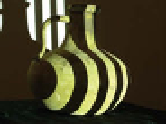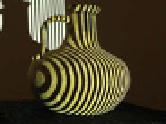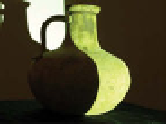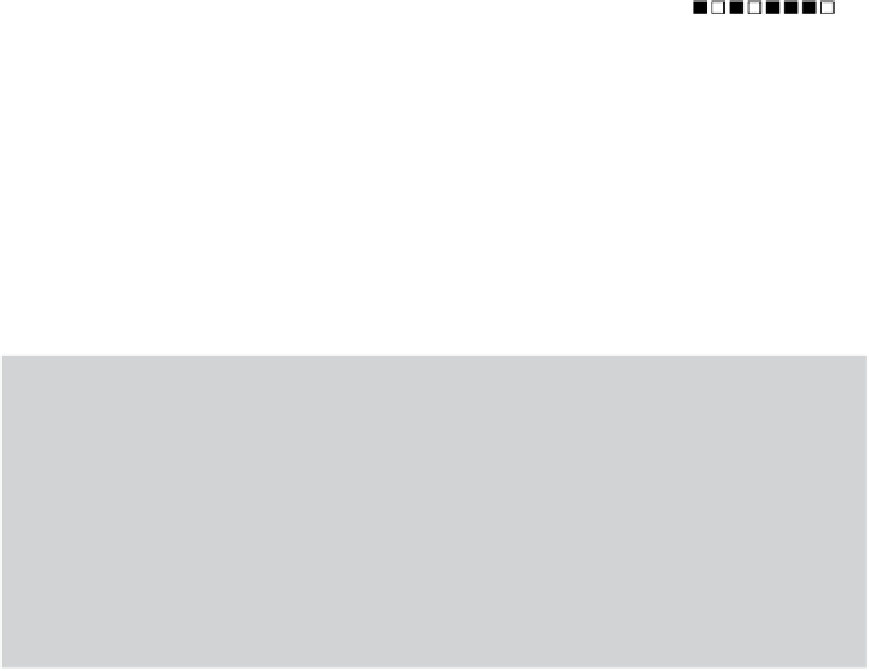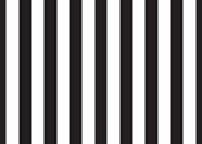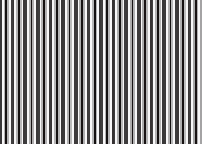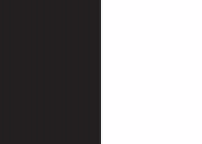Graphics Reference
In-Depth Information
01010001 = stripe 81
Figure 8.17.
Projecting
M
binary patterns (inset at the lower right of each image) onto an object
allows 2
M
on/off patterns to be generated, effectively coding the index of the light plane. In this
example, we use eight binary patterns, allowing 256 stripes to be uniquely indexed. The on/off
patterns at the indicated point show that it corresponds to stripe 81 in the finest-resolution
pattern.
Figure 8.18.
This slightly different set of binary patterns is based on Gray codes. The codewords
for each pair of adjacent stripes only differ in one bit.
It's muchmore common to use a slightly different set of binary patterns illustrated
in Figure
8.18
based on
Gray codes
. The advantage is that the codewords for each
pair of adjacent stripes only differ in one bit, making it easier to accurately determine
Determining whether a scene point is illuminated or not illuminated at a
given instant is harder than it may sound. For example, a scene point with low
reflectance under bright illumination from the projector may have a compara-
ble intensity in the camera's image to a scene point with high reflectance under
no projection illumination. Therefore, using a single global threshold to make the
illuminated/non-illuminated decision for all pixels in the image is a bad idea.
One possibility, as illustrated in Figure
8.19
a, is to first acquire two calibration
images: one in which the projector is on for all pixels (i.e., an all-white pattern) and
one in which the scene is not illuminated by the projector at all (i.e, an all-black
pattern). The average of these calibration images gives a
spatially adaptive
threshold
10
Another way to think about this is that we're using the same 2
M
codewords, but just changing their
left-to-right order in the projected image.

